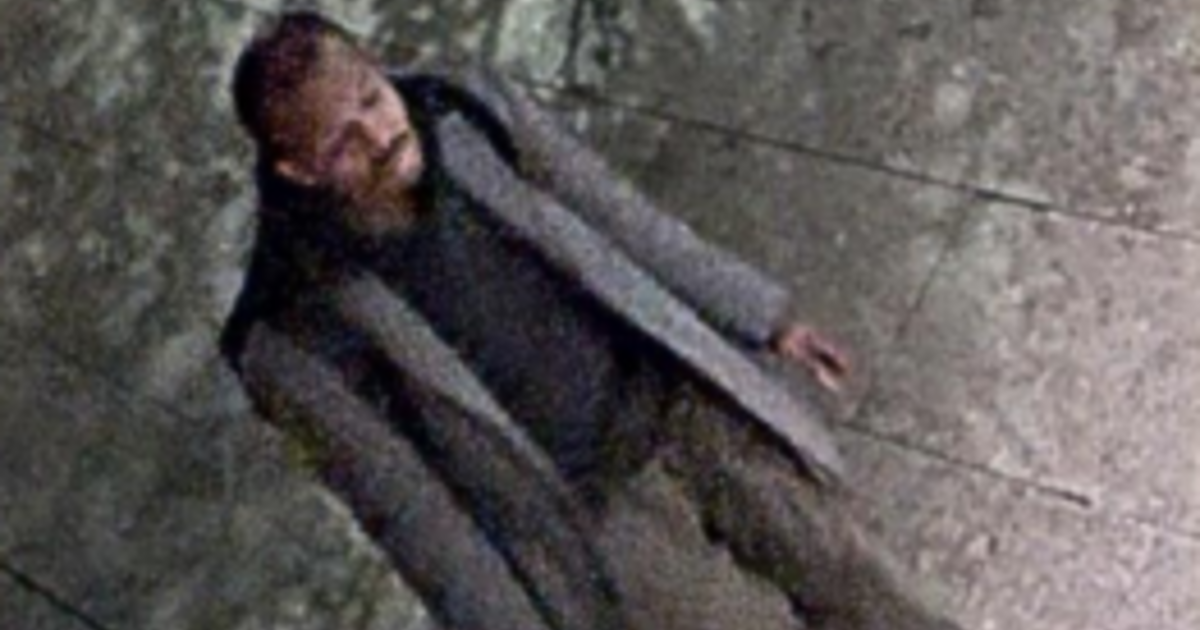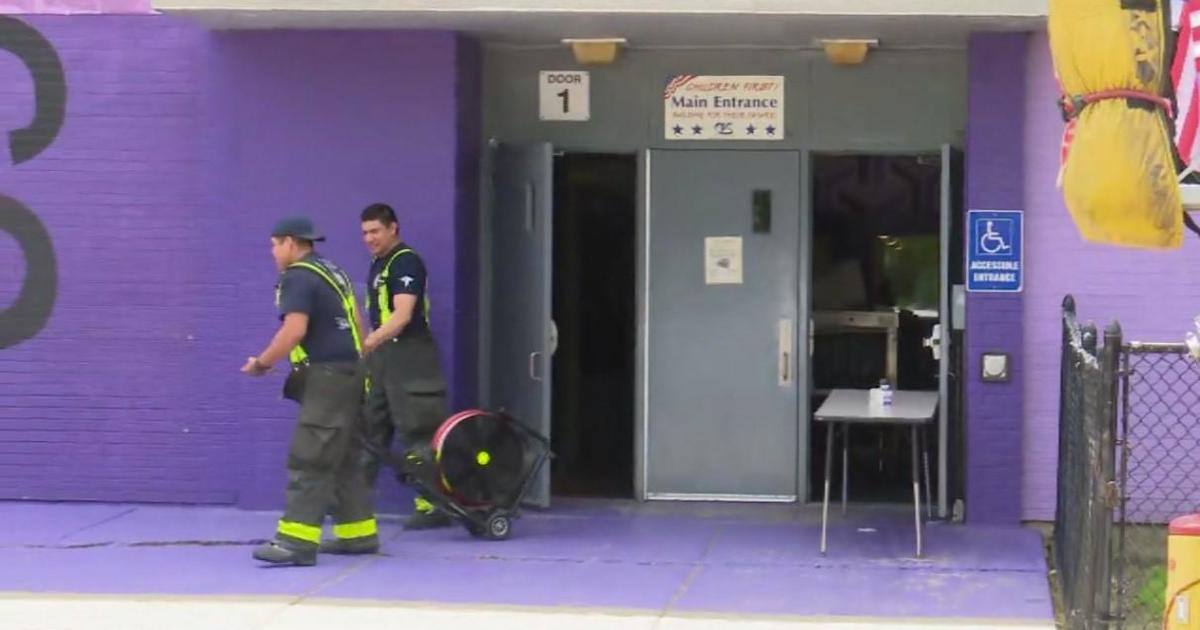Massive Blizzard Wallops Chicagoland
• NATIONAL WEATHER SERVICE WATCHES AND WARNINGS
• CHECK AIRPORT DELAYS
• CHECK RADAR MAPS
• GET TRAFFIC CONDITIONS
• CHECK SCHOOL, BUSINESS CLOSINGS
• FIND A WARMING/COOLING CENTER
• SEND US YOUR PICTURES OF THE STORM
UPDATED 02/02/11 11:53 p.m.
CHICAGO (CBS) -- The Blizzard of 2011 will go down in history as the third biggest snowstorm Chicago has ever seen. Although the snow is over, a deep freeze was on the way overnight, bringing wind chills as low as 20 to 30 degrees below zero.
City officials said Wednesday afternoon that the snowstorm dumped 20.2 inches of snow at O'Hare International Airport, the third largest snow total ever recorded in Chicago.
Although the snow has ended for most of the Chicago area, some areas -- especially northwest Indiana -- will still see lake effect snow. And Jose Santiago, executive director of Chicago's Office of Emergency Management and Communications, said temperatures were expected to drop to as low as 3 degrees overnight, with windchills of 20 to 30 degrees below zero.
There's also the monumental task of digging out huge amounts of snow.
Around 9:30 a.m., a new band of lake effect snow struck downtown, renewing the whiteout conditions. By just before 11 a.m., the snow was finally moving out, except in Northwest Indiana where it will continue well into the afternoon.
Even in Chicago, "This lake effect snow has the potential to reach 3 to 6 inches over the next four hours," mayor's chief of staff Raymond Orozco said.
As of 10 a.m., the official total for Chicago was 20.2 inches of snow. That figure falls short of the blizzards of 1967 (23 inches) and 1999 (21.6 inches). It tops the infamous blizzard of 1979, which topped out at 18.8 inches, although the 1979 snowstorm fell on top of 7 to 10 inches of accumulated snow from an earlier blizzard.
But the snow was not done falling, and the totals will likely climb higher.
Elk Grove Village topped the official totals with 22 inches. Midway International Airport had 18.5 inches, Oak Brook had 18.2 inches, and 17.6 in Downers Grove.
The early morning mess and danger follows a night of thundersnow, with 66 cloud-to-ground lightning strikes reported.
Driving virtually anywhere in the Chicago area was nearly impossible. Lake Shore Drive was closed, and some people ended up being stranded for up to 12 hours before they were rescued.
As of mid-morning, Lake Shore Drive remained closed, as city crews worked to removed abandoned cars.
As of 3:30 p.m., Interstates 57 and 80 both had one lane open in each direction in the area where those highways intersect. Parts of both of those interstates had been shut down earlier in the day
The Edens Expressway had one lane open in both directions, but snow was making it difficult to see lane markings. The Dan Ryan Expressway had one lane open in the local lanes and two lanes open in the express lanes. The Kennedy Expressway had one lane of traffic open in both directoins. Illinois State Route 53 was open with one lane of travel in both directions. The Eisenhower Expressway was clear Wednesday afternoon, although many entrance andn exit ramps were still impassable.
The Bishop Ford Freeway had been cleared as of 3:30 p.m. and plows were still working on its ramps. On the Stevenson Expressway, two lanes of traffic were open in both directions.
In Lake County, Ill., a civil emergency was declared, and all roads were closed. In McHenry County, all roads were nearly impassable, and in Grundy County and points west, I-80 was closed between mile markers 112 and 58. In Kane and Will counties, a travel ban is in effect until further notice.
There was no service at all Wednesday morning on the Heritage Corridor, North Central Service, Metra Electric Blue Island, Southwest Service, and Union Pacific McHenry Sub lines. All others were running on Sunday schedules on Wednesday, with delays of 30 to 45 minutes for most trains.
Metra was planning a modified weekday schedule for all of its rail lines on Thursday.
South Shore trains from Northwest Indiana were running, but about a half dozen morning trains were canceled. South Shore officials reported trouble clearing the parking lot at East Chicago--one of the largest stations on the line.
CTA buses were moving, but slowly, and 'L' trains were operating, but with delays. Blue, Brown, Orange, Green and Red Lines were running normally. On the Pink Line no trains were running between 54th/Cermak and Pulaski as of 2 p.m. Yellow Line temporarily suspended on Wednesday and it was not known when it would resume.
CTA Buses are not running on Lake Shore Drive, which remained closed Wednesday afternoon.
For the Pace suburban bus service, About 55 bus routes were operating Wednesday, out of a total of 200 routes due to road conditions. Pace officials planned to suspend all service as of 6 p.m., but they said doing so will likely not affect riders, given the light passenger loads on Wednesday.
Pace is expected to restore normal service Thursday morning, dependent on road conditions.
At the airports, virtually all flights were canceled. As of 3:35 p.m., more than 2,200 flights had been canceled at O'Hare International Airport and only a few flights had arrived at O'Hare.
Midway International Airport had only a few flights scheduled to arrive and depart Wednesday afternoon, with more than 400 canceled flights on Wednesday.
Chicago Aviation Department officials said both airports hoped to get back on schedule on Thursday, but travelers were advised to check with their airlines for flight information.
As of 4 p.m., a total of 29,800 ComEd customers were without power. Of those customers, 23,000 were in the city of Chicago, the rest in the suburbs. At times, as many as 95,000 ComEd customers were without power, but as of 4 p.m, power had been restored to 165,100 customers who had lost electricity during the storm.
In many neighborhoods of Chicago, the scene was surreal early Wednesday morning. CBS 2's Dorothy Tucker was only about 25 feet from her camera along Cornell Avenue between 47th and 48th streets, but was nearly invisible. Her camera crew had planned to meet her at a nearby hotel, but ended up snowed in on the street.
In Naperville, the snow was dying down by 4:30 a.m., but was drifting nearly 6 feet high. Cars were lined up and stuck, and were not going anywhere.
Naperville city officials say it could take up to two days to get all the roads clear.
The snow was tapering off in areas far western areas such as DeKalb, but the end of the blizzard will be a long and tedious process.



